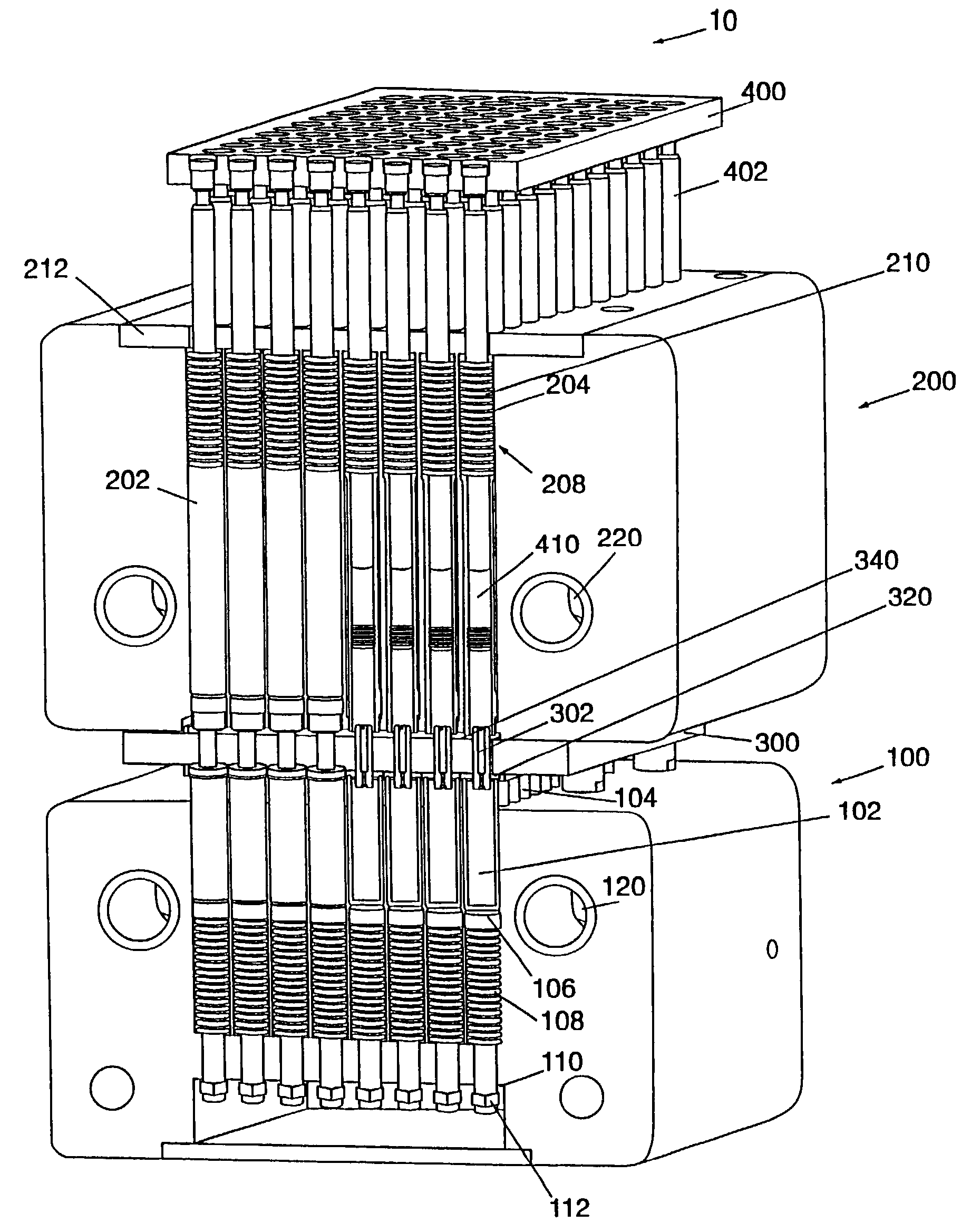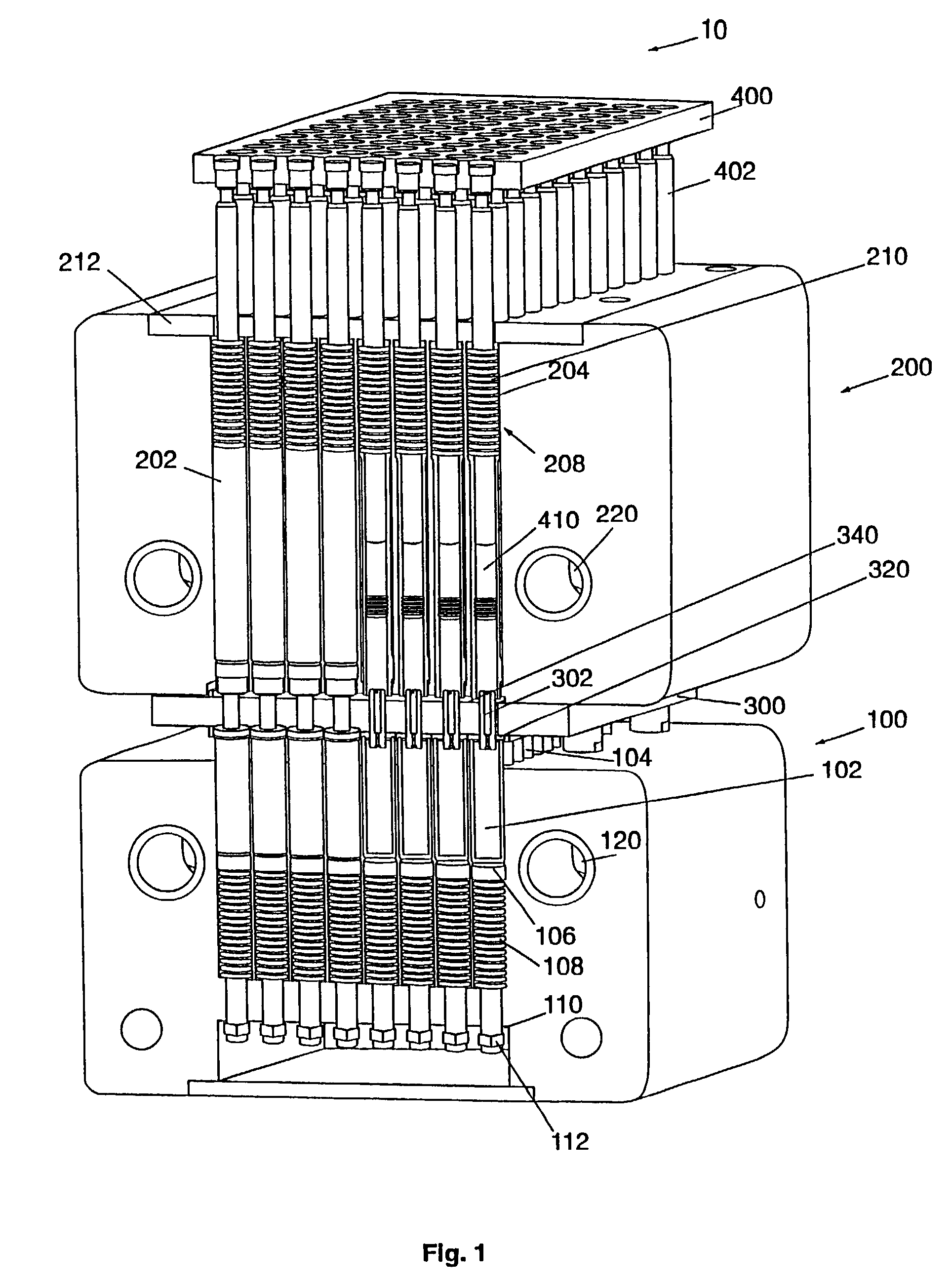Parallel semi-continuous or continuous reactor system
a semi-continuous or continuous reactor technology, applied in the direction of liquid gas reaction of thin film type, gas-gas reaction process, instruments, etc., can solve the problems of slow and arduous process of chemical synthesis, and achieve the effect of preventing undesired mixing of contents, reducing volume, and gradually increasing system pressur
- Summary
- Abstract
- Description
- Claims
- Application Information
AI Technical Summary
Benefits of technology
Problems solved by technology
Method used
Image
Examples
Embodiment Construction
[0039]The present invention provides an apparatus and method for carrying out multiple reactions in parallel. It is especially useful for synthesizing and / or screening combinatorial libraries. The term “header barrel” is used to describe the container that holds the one or more reactants that are fed into the reactor from the sources in the header. The term “barrel” is not intended to be limiting and a header barrel can take any convenient form including a vessel, tank, barrel, pipe, vial, syringe or other form of container. Also, the phrase “storage tank” is used to describe the container that holds the material that exits the reactor. The term “tank” is not intended to be limiting and a storage tank can take any convenient form including a vessel, tank, barrel, pipe, vial, syringe or other form of container.
[0040]FIG. 1 shows a constant volume embodiment of a parallel reactor system 10. The system 10 comprises a reactor block 100 and a header block 200 having sandwiched between th...
PUM
| Property | Measurement | Unit |
|---|---|---|
| time | aaaaa | aaaaa |
| time | aaaaa | aaaaa |
| feed time | aaaaa | aaaaa |
Abstract
Description
Claims
Application Information
 Login to View More
Login to View More - R&D
- Intellectual Property
- Life Sciences
- Materials
- Tech Scout
- Unparalleled Data Quality
- Higher Quality Content
- 60% Fewer Hallucinations
Browse by: Latest US Patents, China's latest patents, Technical Efficacy Thesaurus, Application Domain, Technology Topic, Popular Technical Reports.
© 2025 PatSnap. All rights reserved.Legal|Privacy policy|Modern Slavery Act Transparency Statement|Sitemap|About US| Contact US: help@patsnap.com



